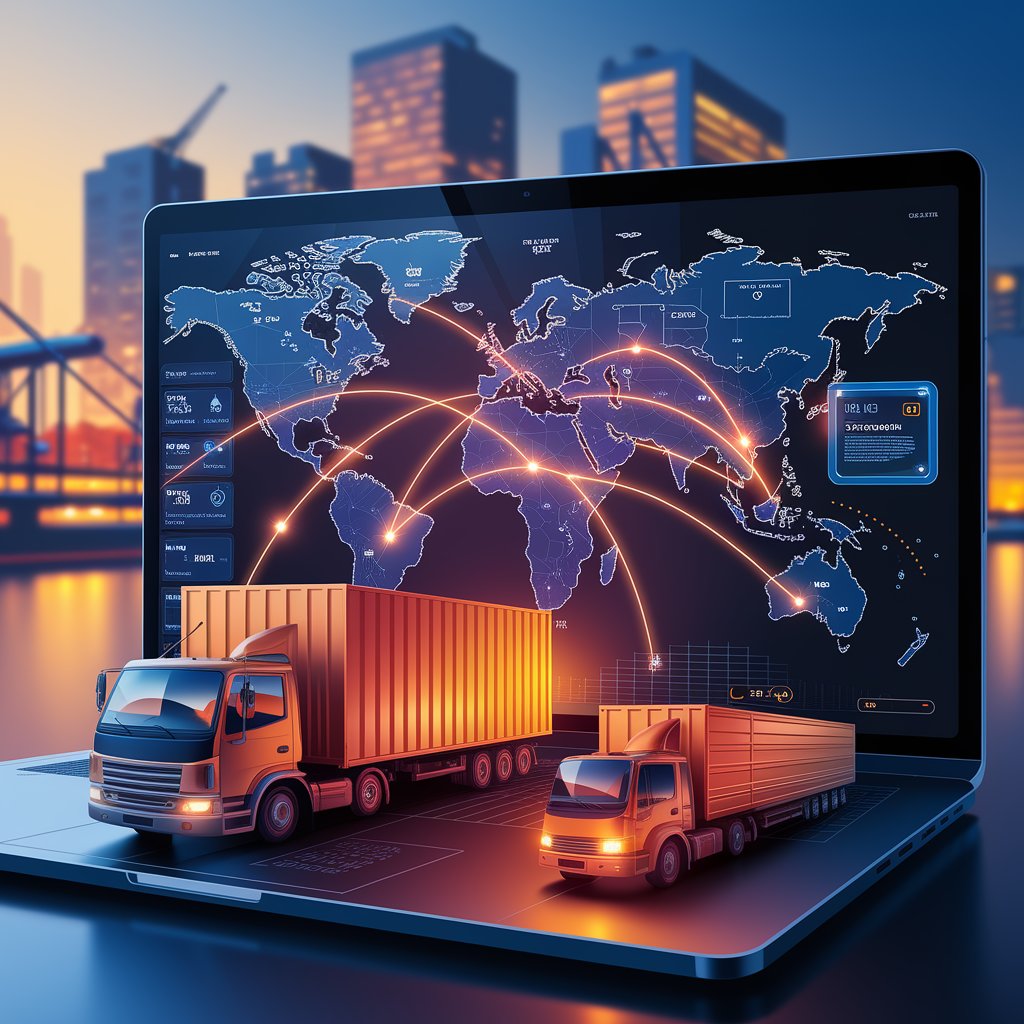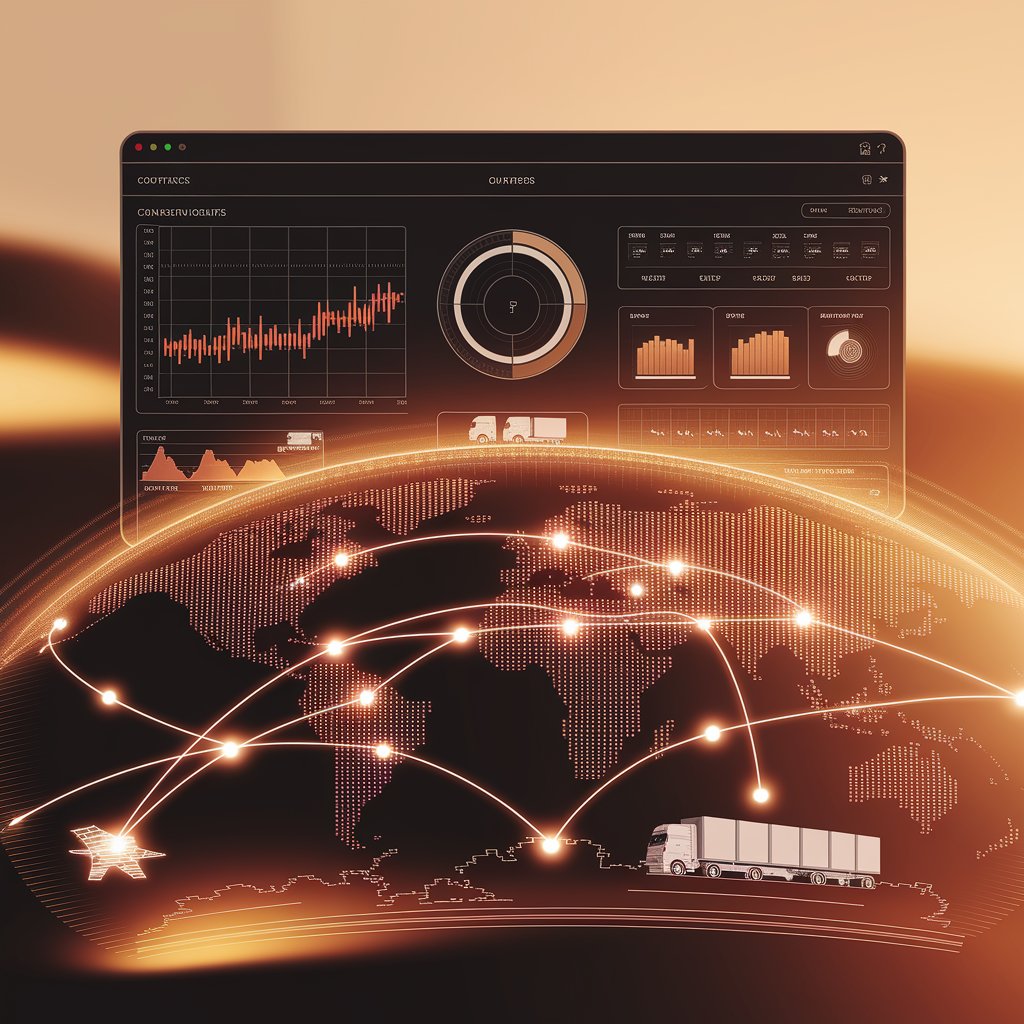Supply Chain IoT Platforms: Connecting Logistics with Real-Time Intelligence

Introduction
Enter supply chain IoT platforms. By leveraging sensors, GPS trackers, RFID, and connected devices, these platforms deliver real-time visibility and intelligence across every link in the supply chain. The result: smarter, faster, and more resilient logistics operations.
What Are Supply Chain IoT Platforms?
Supply chain IoT platforms are digital ecosystems that collect, process, and analyze data from Internet of Things (IoT) devices across the logistics network. These platforms integrate with ERP, TMS, and WMS systems, enabling companies to track shipments, monitor assets, and optimize operations in real time.
Data sources include:
- GPS trackers for vehicles and cargo
- RFID and barcode scanners for inventory
- IoT sensors for temperature, humidity, and shock monitoring
- Telematics systems for fleet performance
- Smart devices in warehouses and ports

Key Features of Supply Chain IoT Platforms
- Real-Time Shipment Tracking – Monitor cargo location and status across modes.
- Condition Monitoring – Sensors track temperature, humidity, and vibration.
- Asset Management – IoT devices prevent theft and ensure equipment uptime.
- Predictive Analytics – Anticipate disruptions from weather, traffic, or port congestion.
- Integration with Core Systems – Connect IoT data with ERP, TMS, and WMS.
- Custom Dashboards – Centralized visibility for managers and customers.
Benefits 📈
- End-to-End Visibility – Transparent tracking across global networks.
- Operational Efficiency – Reduce idle time, stockouts, and manual checks.
- Risk Mitigation – Detect anomalies early to prevent losses.
- Customer Satisfaction – Provide accurate ETAs and proactive communication.
- Cost Reduction – Lower fuel, labor, and warehousing costs.
- Sustainability – Optimize energy use and reduce emissions.

Real-World Applications
- Cold Chain Logistics – Monitor pharmaceuticals and perishables with temperature sensors.
- Fleet Management – Use telematics to track driver behavior and fuel efficiency.
- Ports & Terminals – Deploy IoT devices for container monitoring and crane efficiency.
- Retail & E-commerce – Manage inventory and deliveries with real-time updates.
- Manufacturing – Ensure inbound supply synchronization with production schedules.
Challenges in Implementing Supply Chain IoT Platforms
- Integration with Legacy Systems – Older platforms may resist IoT data flows.
- Data Overload – High volumes of IoT data require advanced filtering.
- Connectivity Gaps – Remote areas may lack reliable networks.
- Cybersecurity Risks – IoT devices can be vulnerable to hacking.
- Implementation Costs – Sensors and infrastructure require upfront investment.

Best Practices for Success
- Start with High-Value Assets – Deploy IoT where the impact is greatest.
- Ensure Data Quality – Standardize sensor inputs and data formats.
- Integrate Across Systems – Link IoT data with ERP, WMS, and TMS.
- Use Predictive Analytics – Move from reactive to proactive decision-making.
- Prioritize Security – Protect IoT networks with encryption and monitoring.
- Measure ROI Continuously – Track efficiency, cost savings, and risk reduction.
The Future of Supply Chain IoT Platforms 🚀
- 5G-Enabled IoT – Faster, more reliable connections for global operations.
- AI + IoT (AIoT) – Smarter, self-learning supply chain ecosystems.
- Digital Twins – Simulate supply chains with real-time IoT data.
- Blockchain Integration – Secure and transparent IoT data sharing.
- Sustainability Metrics – IoT tracking for carbon emissions and green logistics.
Conclusion
Supply chain IoT platforms are revolutionizing logistics by connecting every asset, shipment, and process into one intelligent network. Companies adopting these platforms gain efficiency, visibility, and resilience—key advantages in today’s competitive market.
For shippers, carriers, and freight forwarders, supply chain IoT platforms are no longer optional—they are the foundation of the digital supply chain.
